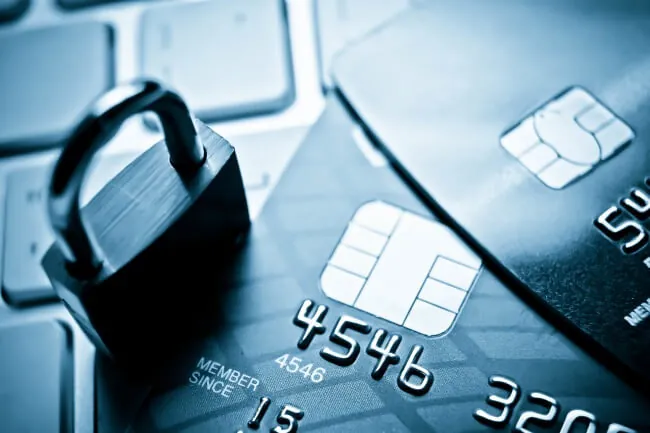
Network Tokenization 101
How Network Tokens Work and Why They’re Vital for Recurring Payments
Today, network tokenization is crucial for businesses that accept card payments, whether online or in person. As a vital part of eCommerce fraud prevention, merchants must understand how these tokens work and simplify recurring payment processes while enhancing transaction security.
Tokenization has safeguarded digital payments since the mid-1990s, starting with the rise of online shopping. Early solutions replaced account numbers and other sensitive information with payment tokens, adding an extra security layer to secure payment pages. By the 2000s, merchants needed to simplify payments by connecting directly with their payment service providers, giving them more control over their customers’ payment experiences.
Then, in 2014, modern network tokenization emerged, first used by digital wallet solutions to reduce the risk of data breaches. Card networks issued tokens to protect sensitive data for the first time, introducing global interoperability and dynamic security to help merchants stay ahead of emerging threats.
What is network tokenization?
Network tokens replace sensitive payment and card information throughout the transaction process. These digital payment tokens, unique and generated by card networks like Visa and Mastercard, serve as a secure proxy for sensitive data. They replace primary account numbers (PANs) and other sensitive details rather than being managed by merchants or their payment service providers (PSP).
Though often used interchangeably, network tokens and payment tokens serve different purposes. Network tokens are issued by card networks and are widely recognized across the entire payment ecosystem.
In contrast, payment tokens encompass any tokens utilized in digital payments. There are several types of tokenization techniques, like payment gateway tokenization, PAN tokenization and PCI tokenization. That means network tokens are a type of payment token, but not every payment token is a network token.
Several key features define network tokens:
- They are created by card networks, not by merchants or payment processors.
- Each token is unique and linked to a specific customer and account number, making it useless if intercepted.
- Tokens are generated when customers start a transaction.
- Network tokens can be used across channels and devices, providing more versatility than other payment tokenization methods.
Unlike merchant or payment gateway tokens, network tokens are widely recognized across the payments ecosystem because they come directly from the card networks. A cryptogram – a security code – is typically included in each token transaction to authenticate the transaction. This means that if someone intercepts the token, it’s useless without the cryptogram, adding an additional layer of security to the payment process.
How does tokenization work?
All network tokenization processing occurs behind the scenes to facilitate frictionless payments for customers and enhanced transaction security for merchants.
Tokenization begins when a customer initiates a transaction. Once they provide their payment details, information is sent to their card issuer, which generates a network token that is then shared with both the customer’s bank and the merchant’s PSP. Since the merchant can store this information to streamline and protect future transactions, network tokenization is sometimes called card-on-file tokenization.
Network Tokenization, Step by Step
Step 1
The customer enters their card details into the merchant’s system
Step 2
The merchant sends the request to the card network and requests a network token
Step 3
The card network works with the customer’s bank to approve or deny the request
Step 4
If approved, the card network generates a token and shares it with the merchant’s gateway
Step 5
The merchant stores the network token for future use
For example, if Jess saves her Discover card information in her account on an ecommerce site, the site can request a network token instead of the PAN. The next time Jess makes a purchase, the merchant submits the token and Discover maps it to Jess’ actual account information to complete the transaction.
Where and when are network tokens used?
Most people use network tokens every day without realizing it. They work quietly behind the scenes to make payments, especially recurring ones, secure and seamless, including:
- Digital wallet payments like Apple Pay and Google Pay
- Subscription services like Spotify, Hulu and Netflix
- Ecommerce platforms, including Amazon and Shopify
- Card-on-file transactions with other retailers and other service providers
By using a dynamic token instead of storing actual card details, these services keep payment information secure while enabling quicker, more convenient transactions in the future. Since businesses store the token instead of actual card information, it also provides an additional layer of protection in event of a data breach.
Why are network tokens important?
Network tokens enhance payment security and strengthen the entire payment authentication process. For customers, this means safer transactions, fraud protection and a frictionless payment experience. Their dynamic nature protects card data and automatically updates details like new card numbers and updated expiration dates, which helps limit service interruptions and declined payments.
Merchants also benefit significantly from network tokens. They facilitate faster checkouts and improve authorization rates by keeping payment information current, reducing customer churn and lost sales. These tokens lower fraud risk, enabling merchants to save on processing fees. By simplifying the management of stored credentials, network tokens create a better customer experience, boosting operational efficiency and promoting business growth.
What are the benefits of network tokenization for subscription-based businesses?
Network tokens are handy for subscription-based businesses. Traditional card-on-file transactions required merchants to store customers’ account numbers, often leading to payment failures when card numbers changed or expired. With network tokenization, however, merchants can store and use network tokens that are updated dynamically when card information changes.
- Enhanced security – Fraudsters often try to intercept data transmitted between customers, banks, and merchants, but network tokens are useless without cryptograms. Using tokenization can reduce fraud by 28% compared to transactions without it.
- Reduced PCI-DSS compliance requirements – Network tokenization enables businesses to securely store and reuse customer data for card-on-file transactions without keeping actual account numbers, thus reducing their compliance scope.
- Enhanced authorization rates – Network tokens enable frictionless transactions, resulting in higher authorization rates for businesses—leading to more completed transactions and less customer churn. Companies can experience a 3% increase in transaction approvals with tokenization.
Source: Paze (2023). Payment network tokenization demystified.
How do network tokens prevent fraud?
Network tokenization provides digital payment security across the payment system that helps reduce merchants’ PCI-DSS compliance scope. By replacing sensitive card details with unique, encrypted tokens, PSPs that support network tokenization provide added layers of security to prevent fraud and protect both customers and businesses. Here’s how:
- Domain restrictions: Each network token is associated with a specific domain, so only the designated merchant can issue it, preventing unauthorized charges.
- Single-use cryptograms: To further enhance transaction security, network tokens also include time-sensitive codes called cryptograms that validate transactions. These one-time codes confirm the payment request is coming from an authorized merchant, preventing unauthorized purchases.
- Secure vault storage: Tokenized information is stored in highly secure digital vaults that align with PCI DSS compliance requirements to reduce cyberattack exposure. Since businesses don’t store customers’ raw account information, network tokens reduce the risk of sensitive data being stolen.
Commitment to security
Together with additional security measures, network tokens are one of the most effective tools in digital payment security. They protect individual transactions and customers and help businesses maintain compliance with strict security regulations, shielding them from costly data breaches and reputational damage. Alongside vault technology, point-to-point encryption (P2PE) and additional authentication measures such as 3D Secure, network tokens are crucial in today’s threat-filled environment—particularly for subscription-based businesses that depend on recurring transactions involving stored payment information.
At Payway, we pride ourselves on integrating the most advanced security technology into our payment solution, allowing our customers to reduce their compliance scope and protect sensitive data. As a PCI-DSS certified solution, our gateway supports network tokenization in addition to P2PE, payment tokenization, vault technology and 3D Secure for eCommerce fraud prevention.
To learn more about our security features and how our gateway streamlines recurring transactions for subscription-based businesses, reach out to our concierge support team.
Sources
Deloitte (2023). Network Tokenization for Merchants.
Mastercard (N.D.). Card on File Tokenization.
Checkout.com (2023). Network Tokens Explained.


